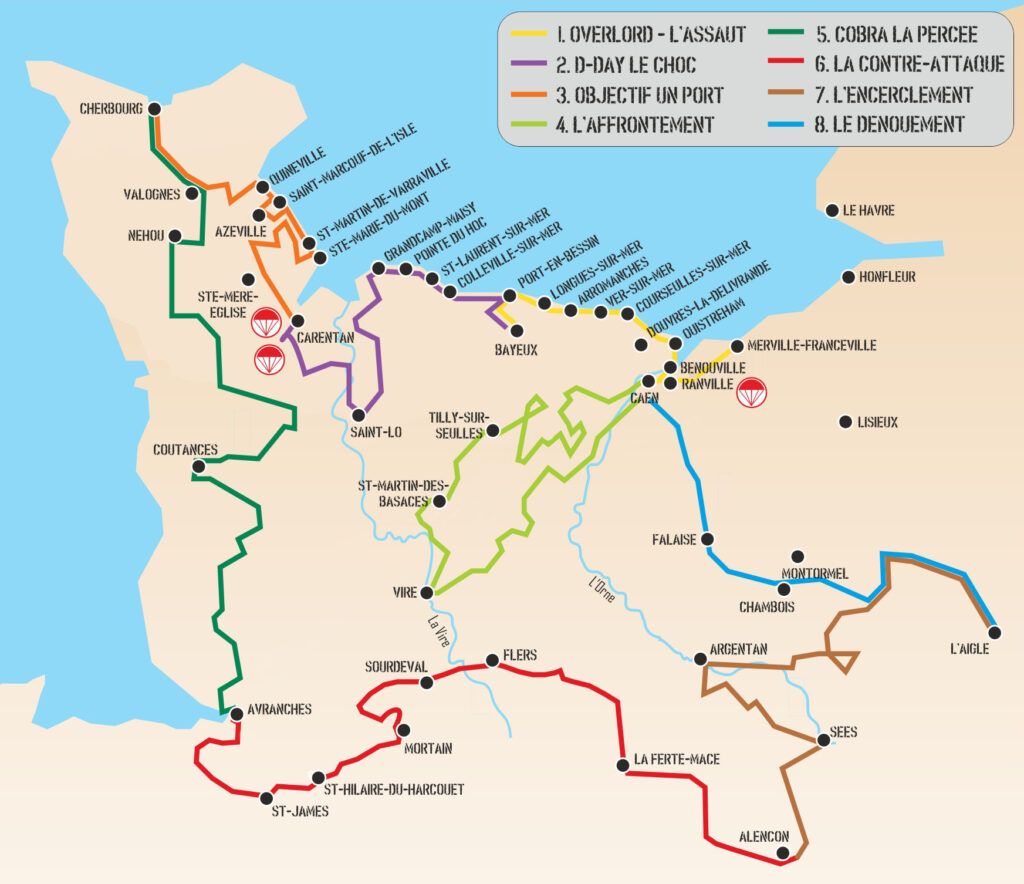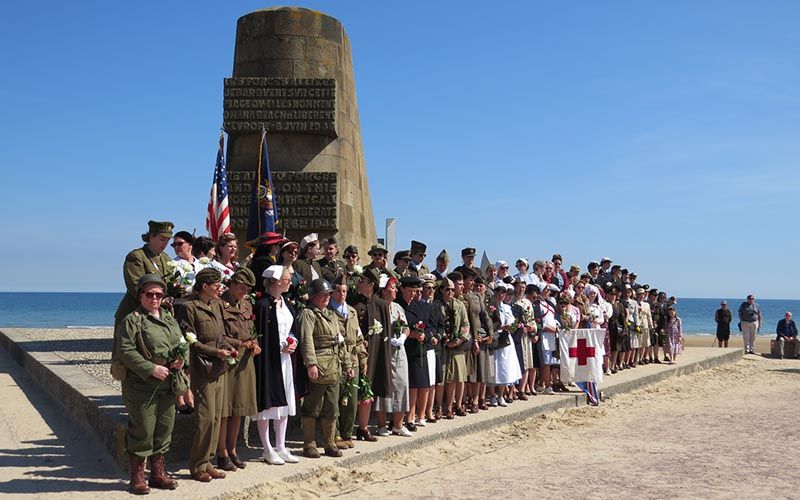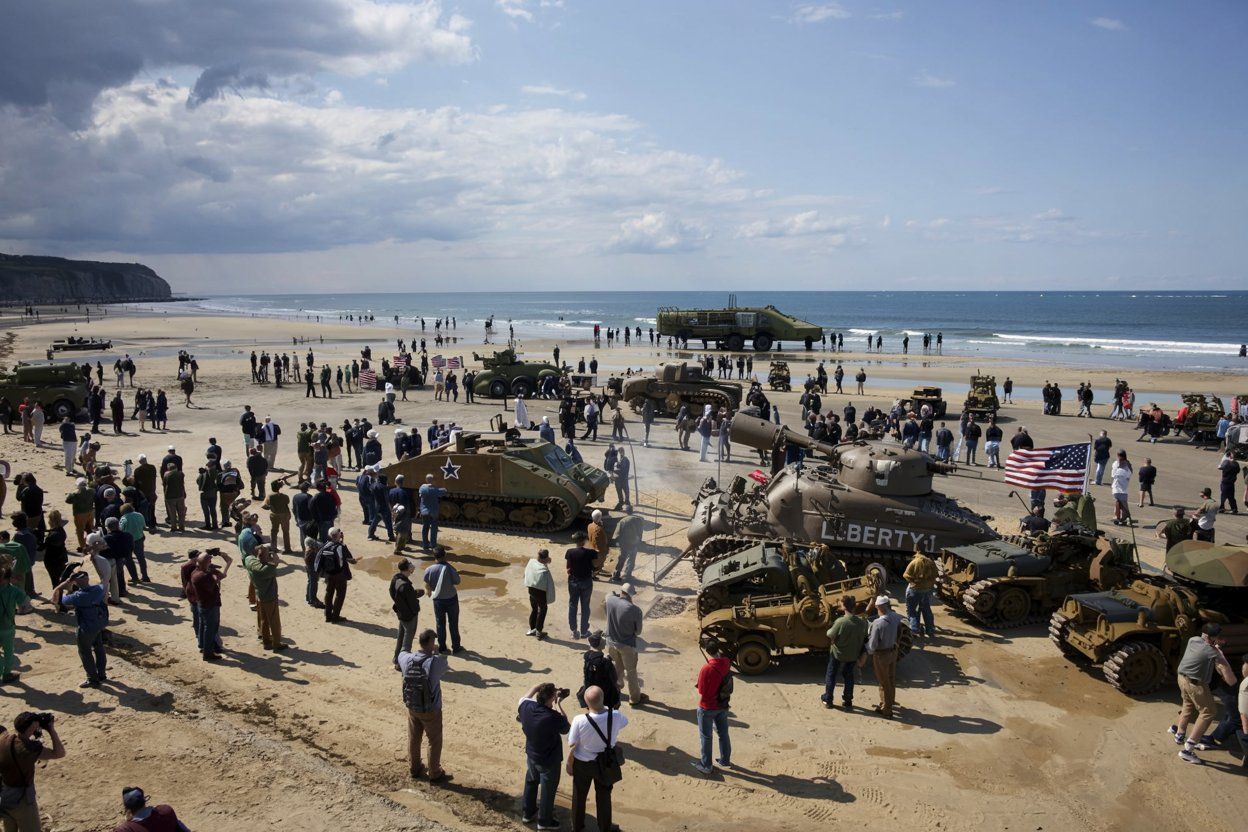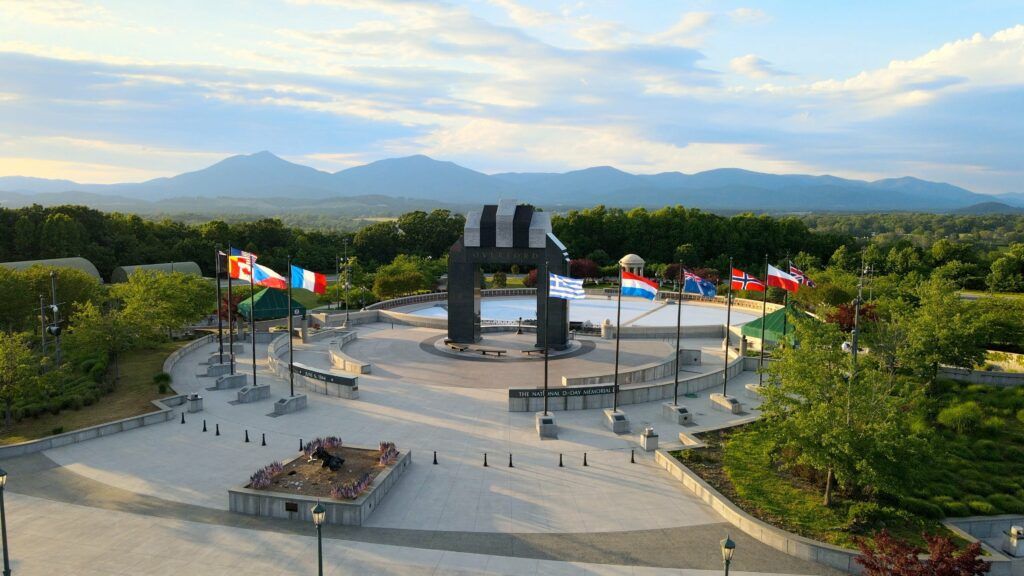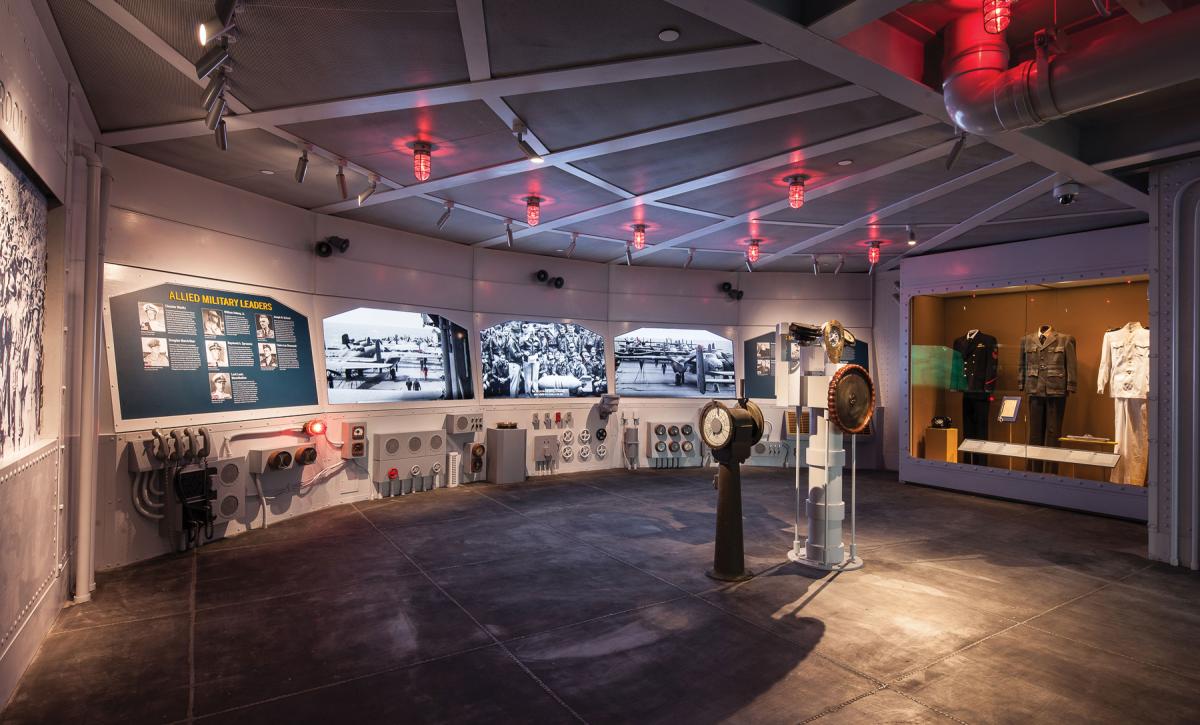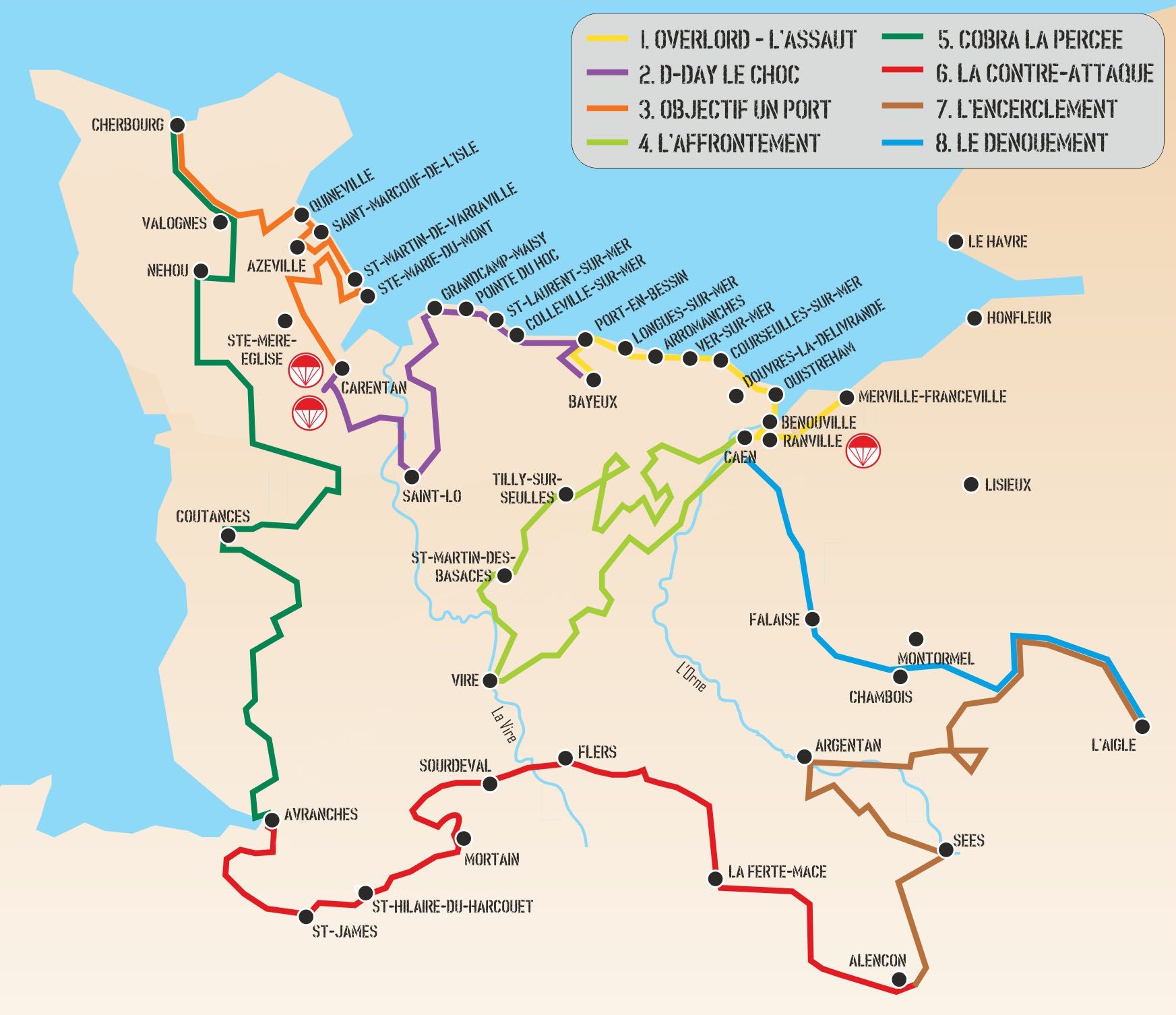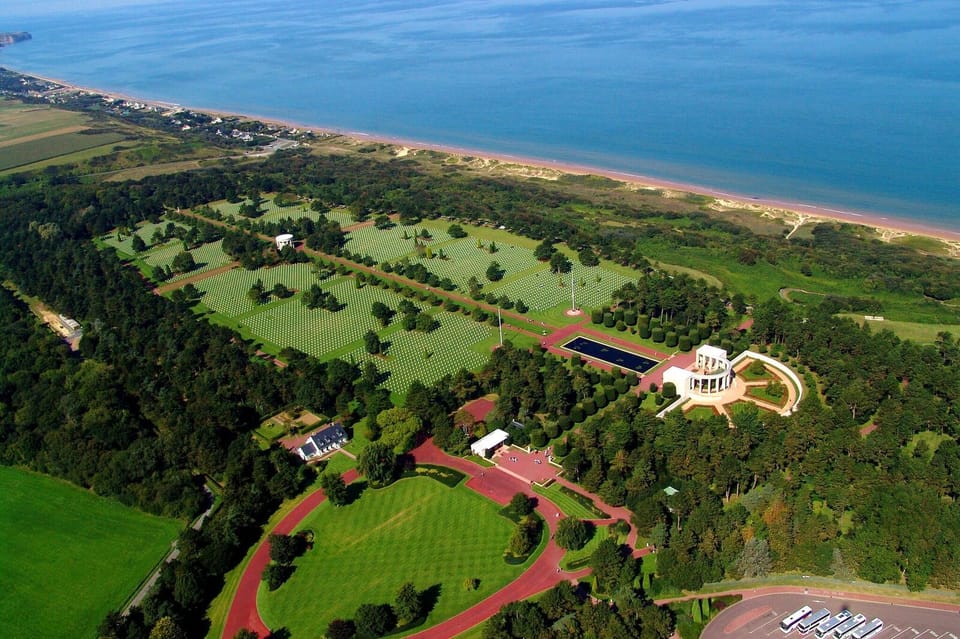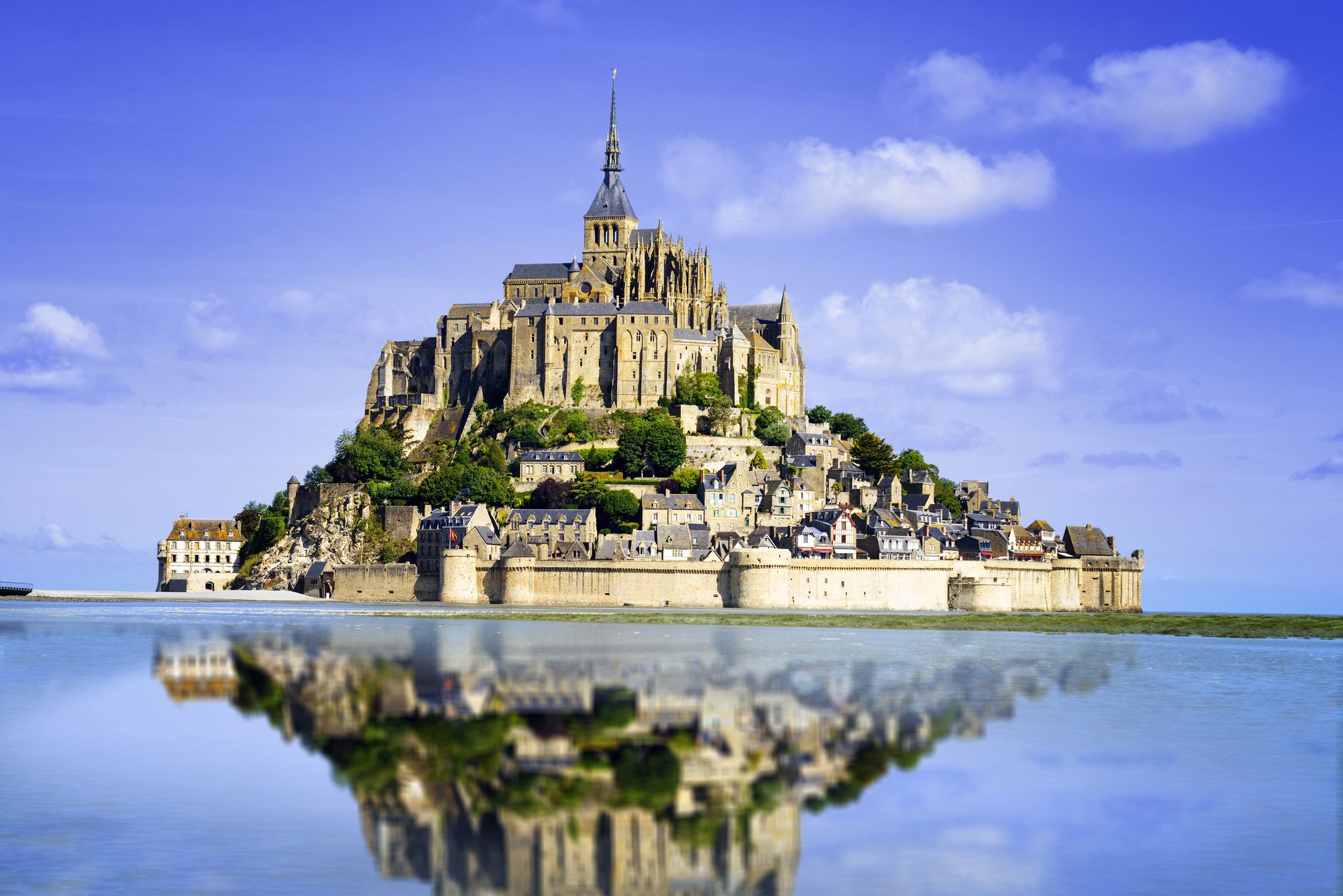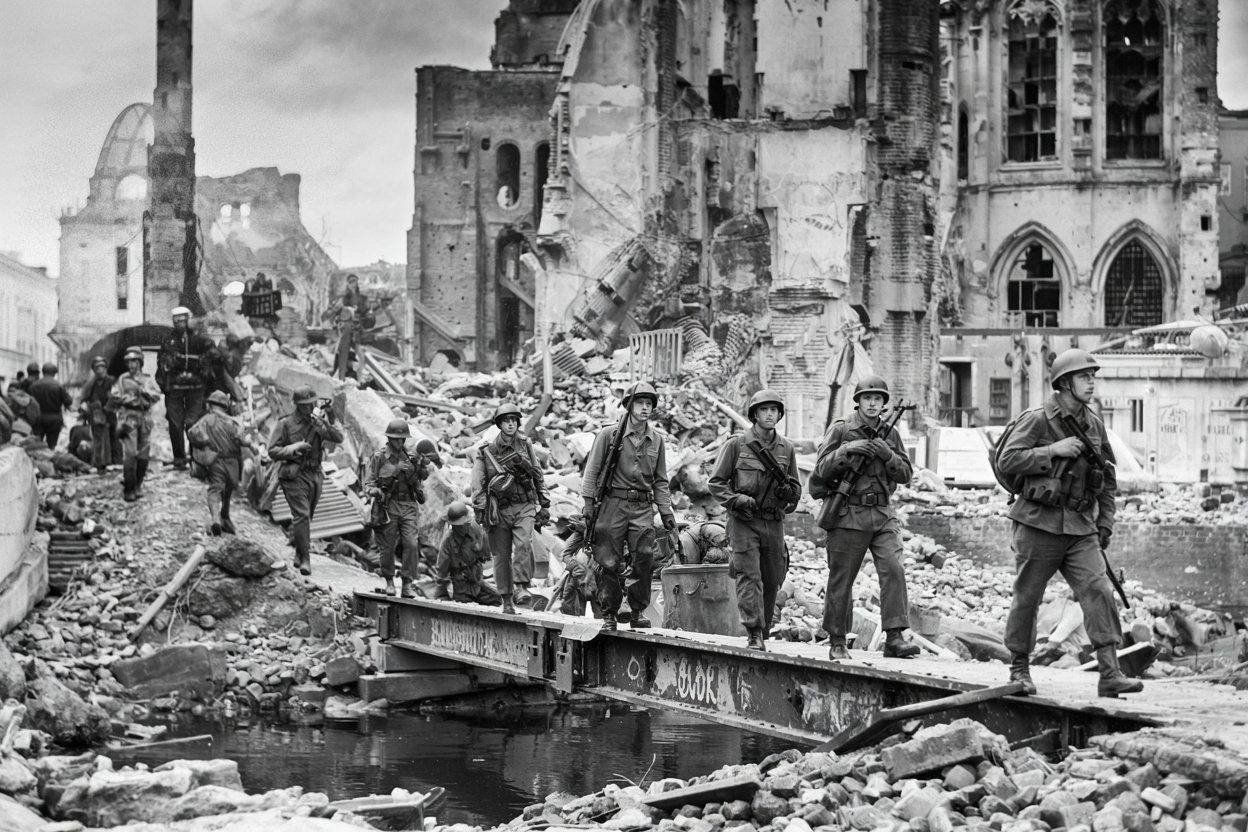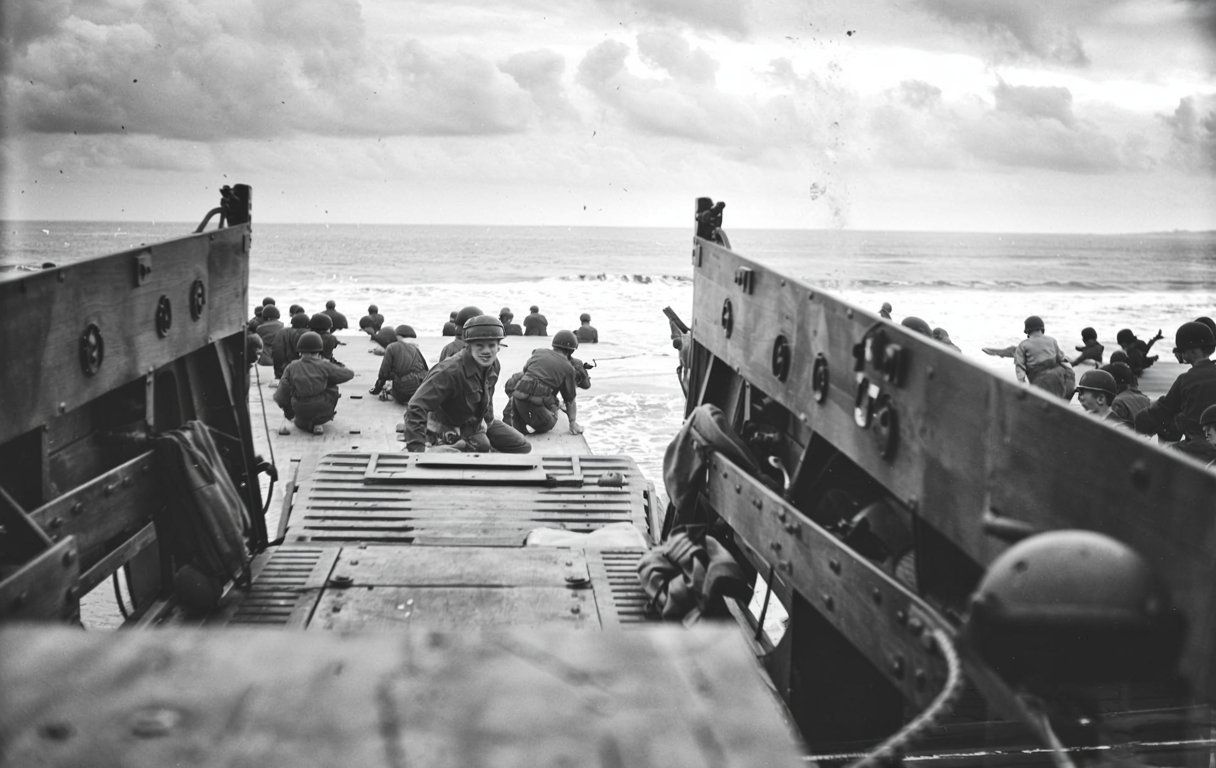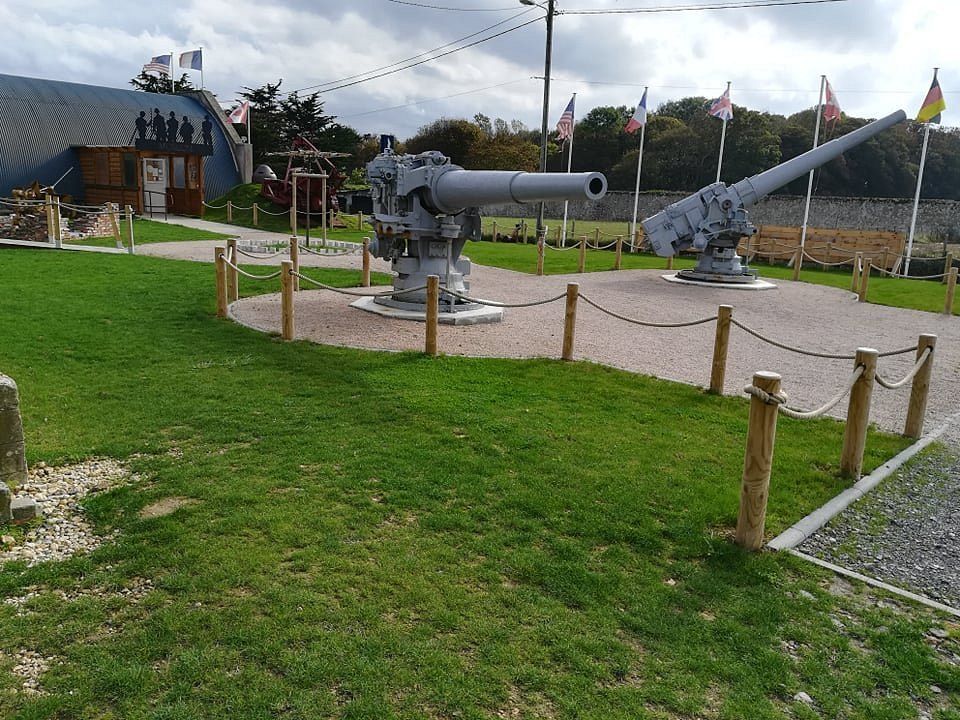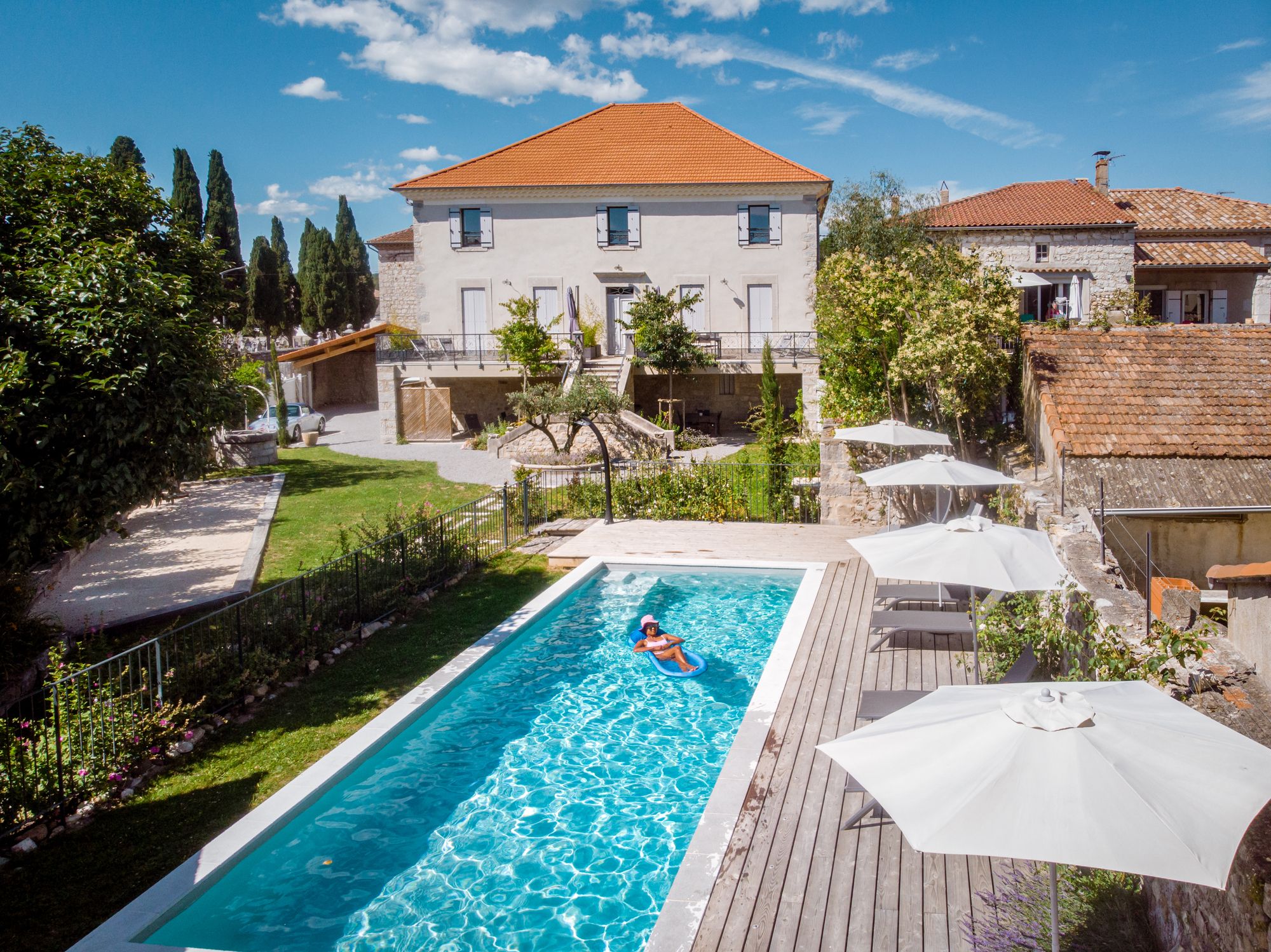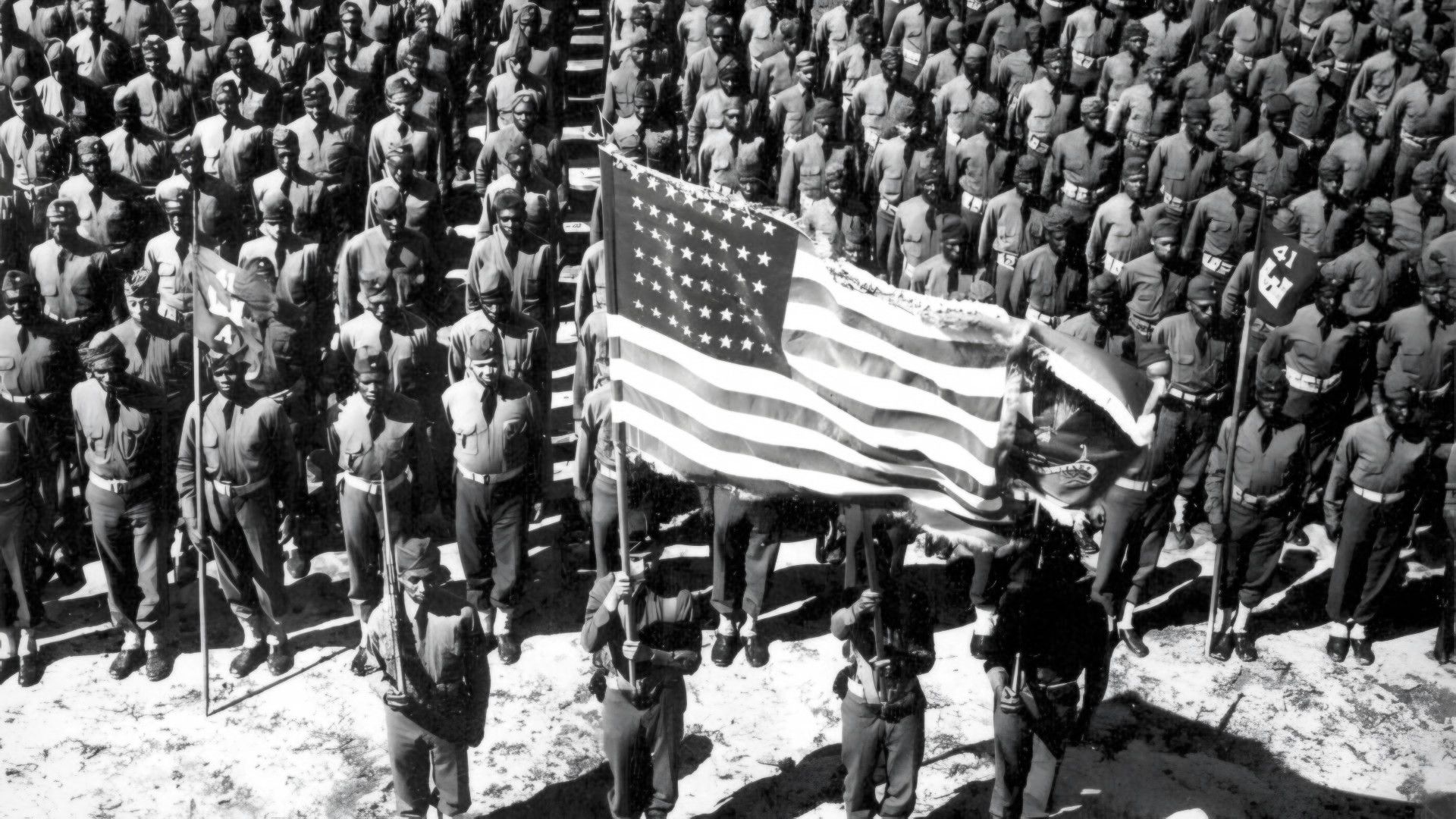Walking in the footsteps of Operation Overlord is a powerful way to connect with the story of D-Day and the Normandy landings. These days, you’ll find well-marked trails tracing the same routes Allied forces took on June 6, 1944, and during the fierce battles that followed. The beaches of Normandy, once scenes of chaos and heroism, now feel calm, but the memory of those who fought and died lingers in the air.
The Liberation Route Europe ties together many key D-Day locations, letting you experience the terrain that shaped one of history’s largest military operations. From Omaha Beach to Mortain, where the German counterattack turned fierce, these walking routes offer a real sense of the challenges both sides faced. Walking these paths, you start to grasp the tough decisions and obstacles that defined the invasion.
D-Day Heritage Route 1: Omaha Beach and American Sector
Total Duration: Full Day (8-9 hours)
Route Overview
Starting at the Normandy American Cemetery and Memorial, this journey takes you through the heart of the American sector of Operation Overlord, focusing on Omaha Beach and surrounding historic sites.
Key Stops
1. Normandy American Cemetery and Memorial, Colleville-sur-Mer
Historical Context: Final resting place for 9,387 American soldiers who lost their lives in the D-Day landings and subsequent operations. The cemetery overlooks Omaha Beach where American forces faced their toughest resistance.
Visitor Experience: Allow 2 hours to visit the memorial, cemetery, and visitor center with its exhibits and personal stories.
Notable Features: The reflecting pool, memorial colonnade, and the “Spirit of American Youth Rising from the Waves” statue.
2. Omaha Beach, Saint-Laurent-sur-Mer
Historical Context: Codenamed “Omaha,” this 5-mile stretch saw the heaviest American casualties on D-Day. The 1st and 29th Infantry Divisions faced determined German resistance and difficult terrain.
Visitor Experience: Walk the beach that was once the scene of such sacrifice. The “Les Braves” memorial sculpture on the sand provides a powerful focal point.
Allow: 1 hour
3. Pointe du Hoc
Historical Context: A promontory with a 100-foot cliff overlooking the English Channel, where U.S. Army Rangers scaled the cliffs to destroy German artillery positions that could fire on both Omaha and Utah beaches.
Visitor Experience: Explore the preserved battlefield with bomb craters and bunkers. The site remains largely as it was after the battle.
Allow: 1.5 hours
4. Musée Mémorial d’Omaha Beach, Saint-Laurent-sur-Mer
Historical Context: Museum dedicated to the American landing on Omaha Beach with detailed exhibits on equipment, weapons, and personal items.
Visitor Experience: Comprehensive collection of artifacts and dioramas depicting the landing operations.
Allow: 1.5 hours
5. German Cemetery at La Cambe
Historical Context: Resting place for over 21,000 German soldiers, offering a somber contrast to the Allied cemeteries.
Visitor Experience: A stark, solemn site with flat grave markers under oak trees, encouraging reflection on the cost of war for all sides.
Allow: 45 minutes
Step-by-Step Directions:
- Begin at the Normandy American Cemetery and Memorial in Colleville-sur-Mer (parking available)
- Drive 3 miles west to Omaha Beach at Saint-Laurent-sur-Mer (10 minutes)
- Visit the Les Braves memorial on the beach
- Continue to Musée Mémorial d’Omaha Beach nearby (5 minute walk or short drive)
- Drive 8 miles west to Pointe du Hoc (20 minutes)
- Return eastward and drive 15 miles to La Cambe German Cemetery (25 minutes)
- Optional: End your day with dinner in Bayeux, a historic town 7 miles from La Cambe
D-Day Heritage Route 2: Utah Beach and Airborne Operations
Total Duration: Full Day (7-8 hours)
Route Overview
This route explores the westernmost American landing beach and the crucial airborne operations that supported it, taking visitors through charming Norman villages that witnessed the first hours of the liberation.
Key Stops
1. Airborne Museum, Sainte-Mère-Église
Historical Context: Sainte-Mère-Église was one of the first towns liberated on D-Day. The 82nd and 101st Airborne Divisions parachuted into this area in the early hours of June 6, 1944. The town became famous for paratrooper John Steele, who was caught on the church steeple during the drop.
Visitor Experience: The museum houses extensive collections related to the American airborne landings, including a C-47 aircraft and a Waco glider. Don’t miss the church with a parachute effigy commemorating John Steele.
Allow: 2 hours
2. Utah Beach Museum (Musée du Débarquement Utah Beach), Sainte-Marie-du-Mont
Historical Context: Utah Beach was the westernmost landing beach where the U.S. 4th Infantry Division came ashore. Despite being landed off-target, the troops adapted quickly, and Utah saw the lightest casualties of all five beaches.
Visitor Experience: The museum is built around a former German bunker and features an original B-26 Marauder bomber—one of only six remaining in the world. Exhibits trace the planning of Operation Overlord through the liberation of Paris.
Allow: 1.5 hours
3. Brecourt Manor, near Sainte-Marie-du-Mont
Historical Context: Site of a famous action by Easy Company of the 506th Parachute Infantry Regiment (featured in “Band of Brothers”), where a small group of paratroopers destroyed a German artillery battery that was firing on Utah Beach.
Visitor Experience: Though the manor is private property, visitors can see the fields where the action took place and a memorial marker. The surrounding countryside appears much as it did in 1944, with hedgerows and narrow lanes.
Allow: 30 minutes
4. Dead Man’s Corner Museum, Saint-Côme-du-Mont
Historical Context: Named after a knocked-out American tank whose commander’s body was visible for several days, this crossroads was a key German defensive position. The building served as headquarters for German paratroop officers before being captured by American forces.
Visitor Experience: The museum occupies the actual house used as German HQ and focuses on the paratroopers of both sides. It houses an impressive collection of uniforms, equipment, and personal items.
Allow: 1 hour
5. La Fière Bridge and Iron Mike Statue
Historical Context: Site of a crucial battle where American paratroopers fought to secure this strategic crossing over the Merderet River. The fierce four-day battle was essential to linking the Utah beachhead with inland airborne forces.
Visitor Experience: Visit the Iron Mike statue, dedicated to all American paratroopers, and walk the causeway where intense fighting took place. Interpretive panels explain the battle’s significance.
Allow: 45 minutes
Step-by-Step Directions:
- Start your day at the Airborne Museum in Sainte-Mère-Église town center (parking available in town)
- Visit the church across the square with the John Steele parachute display
- Drive 7 miles east to Utah Beach Museum (20 minutes)
- After visiting the museum, drive 3 miles to Brecourt Manor vicinity (10 minutes)
- Continue 5 miles to Dead Man’s Corner Museum in Saint-Côme-du-Mont (15 minutes)
- Drive 3 miles southwest to La Fière Bridge and the Iron Mike statue (10 minutes)
- Optional: End your day with a visit to the picturesque port town of Carentan, a key objective of the invasion (10 minute drive)
D-Day Heritage Route 3: Gold, Juno, and Sword Beaches – The British and Canadian Sector
Total Duration: Full Day (8-9 hours)
Route Overview
This route covers the eastern section of the D-Day landings, focusing on the British and Canadian beaches and their objectives, including the city of Caen and Pegasus Bridge.
Key Stops
1. Pegasus Bridge and Memorial Museum, Ranville
Historical Context: Capturing this bridge over the Caen Canal was the first Allied objective of D-Day, accomplished by British glider troops of the 6th Airborne Division just after midnight on June 6. This daring operation helped secure the eastern flank of the invasion area.
Visitor Experience: The museum houses the original bridge that was replaced in 1994. Exhibits detail the planning and execution of the operation. Nearby stands Café Gondrée, the first house in France to be liberated.
Allow: 1.5 hours
2. Sword Beach, Ouistreham
Historical Context: The easternmost landing beach, assaulted by the British 3rd Infantry Division with the objective of linking up with airborne forces and advancing to Caen. French commandos also landed here to clear strongpoints in Ouistreham.
Visitor Experience: Visit the beach and the impressive German bunker “Le Grand Bunker” that now houses the Atlantic Wall Museum, showcasing the formidable defenses that faced Allied troops.
Allow: 1.5 hours
3. Juno Beach Centre, Courseulles-sur-Mer
Historical Context: Juno Beach was the responsibility of the 3rd Canadian Infantry Division. Despite facing strong resistance and beach obstacles, the Canadians advanced further inland than any other Allied force on D-Day.
Visitor Experience: This modern museum is Canada’s D-Day memorial, offering interactive exhibits on the Canadian war effort and the experiences of troops on Juno Beach. Walking tours of the beach defenses are available.
Allow: 2 hours
4. Gold Beach and Arromanches (Port Winston)
Historical Context: Gold Beach was assigned to the British 50th Infantry Division. At Arromanches, the British constructed an artificial harbor (Mulberry B) that was crucial for supplying the Allied armies ashore.
Visitor Experience: Visit the D-Day Museum with its detailed models of the artificial harbor. Remnants of the harbor’s concrete caissons are still visible in the bay. The 360° Cinema on the clifftop offers powerful archival footage.
Allow: 2 hours
5. Bayeux War Cemetery and Memorial
Historical Context: The largest British Commonwealth cemetery of the Second World War in France, containing 4,648 burials, mostly from the D-Day landings and subsequent Battle of Normandy. Bayeux was the first major town liberated by the Allies.
Visitor Experience: A beautifully maintained cemetery with the Memorial to the Missing bearing the names of over 1,800 Commonwealth soldiers. The nearby Bayeux Museum of the Battle of Normandy provides context for the broader campaign.
Allow: 1 hour
Step-by-Step Directions:
- Begin at Pegasus Bridge and Memorial Museum in Ranville (parking available)
- Drive 6 miles northeast to Sword Beach and the Atlantic Wall Museum in Ouistreham (15 minutes)
- Continue 14 miles west along the coast to the Juno Beach Centre in Courseulles-sur-Mer (30 minutes)
- Drive 9 miles further west to Arromanches and Gold Beach (20 minutes)
- Visit both the D-Day Museum in town and the 360° Cinema on the cliff
- Conclude your day with a 7-mile drive south to Bayeux War Cemetery (15 minutes)
- Optional: Spend the evening exploring historic Bayeux, which survived the war largely intact and houses the famous Bayeux Tapestry from the Norman Conquest of 1066
D-Day Heritage Route 5: Beyond the Beaches – The Battle of Normandy
Total Duration: Full Day (8-9 hours)
Route Overview
While the D-Day landings on June 6, 1944, were crucial, the subsequent Battle of Normandy lasted nearly three months. This route explores key sites beyond the landing beaches, focusing on the hard-fought campaign to break out of the beachhead and ultimately liberate France.
Key Stops
1. Memorial de Caen
Historical Context: Caen was a primary objective for British and Canadian forces on D-Day but wasn’t fully captured until July 19 after intense fighting that destroyed much of the city. The battle for Caen was pivotal in tying down German armor that might otherwise have been used against the Americans.
Visitor Experience: This modern peace museum offers a comprehensive view of World War II with extensive exhibits on the Battle of Normandy. Particularly moving are the displays on civilian experiences during the bombing and fighting.
Allow: 2.5 hours
2. Hill 262 (Mont Ormel) – Falaise Pocket Memorial
Historical Context: By August 1944, Allied forces had encircled the German Army at Falaise. Hill 262, held by Polish troops, was the final gap in the Allied ring. The desperate German attempts to escape through this gap, and Allied efforts to close it, resulted in one of the war’s most decisive battles.
Visitor Experience: The memorial museum offers a panoramic view of the battlefield. Interactive displays explain how the pocket was formed and closed, while outdoor viewpoints with orientation tables help visitors understand the battle’s geography.
Allow: 1.5 hours
3. St. Lambert sur Dives
Historical Context: This small village witnessed some of the most intense fighting as trapped German forces attempted to escape the Falaise Pocket. Canadian Major David Currie won the Victoria Cross here for his leadership in holding this critical position across the German escape route.
Visitor Experience: Visit the spot where the famous photograph of Major Currie accepting the surrender of German troops was taken, now marked with a memorial plaque. The village church still bears scars of the battle.
Allow: 45 minutes
4. Chambois and the Corridor of Death
Historical Context: The area between Chambois and St. Lambert became known as the “Corridor of Death” due to the incredible destruction wreaked on retreating German forces. Thousands of vehicles, horses, and men were killed in concentrated Allied air and artillery attacks.
Visitor Experience: The quiet country roads today belie the carnage of August 1944. A memorial in Chambois honors the American, Canadian, Polish, and French forces that sealed the pocket. The countryside still occasionally yields artifacts from the battle.
Allow: 1 hour
5. General Patton Memorial Museum, Avranches
Historical Context: Avranches was the site of the critical American breakout in late July 1944 that allowed Patton’s Third Army to sweep into Brittany and south into France, marking the end of static warfare in Normandy.
Visitor Experience: This museum focuses on General Patton and the operations of the U.S. Third Army after the breakout from the Normandy beachhead. Exhibits include vehicles, weapons, and personal items, plus an overview of the rapid advance that followed Operation Cobra.
Allow: 1.5 hours
Step-by-Step Directions:
- Start your day at the Memorial de Caen (ample parking available)
- Drive 45 miles southeast to Mont Ormel (Hill 262) Memorial (1 hour 15 minutes)
- Continue 7 miles south to St. Lambert sur Dives (15 minutes)
- Drive 3 miles to Chambois (10 minutes)
- Take time to explore the surrounding countryside roads of the former Falaise Pocket
- Complete your journey with a 55-mile drive west to the Patton Memorial Museum in Avranches (1 hour 10 minutes)
- Optional: From Avranches, you can easily connect to Mont Saint-Michel, one of France’s most iconic landmarks, just 15 miles southwest (30 minutes)
Downloadable Map of Operation Overlord Routes
